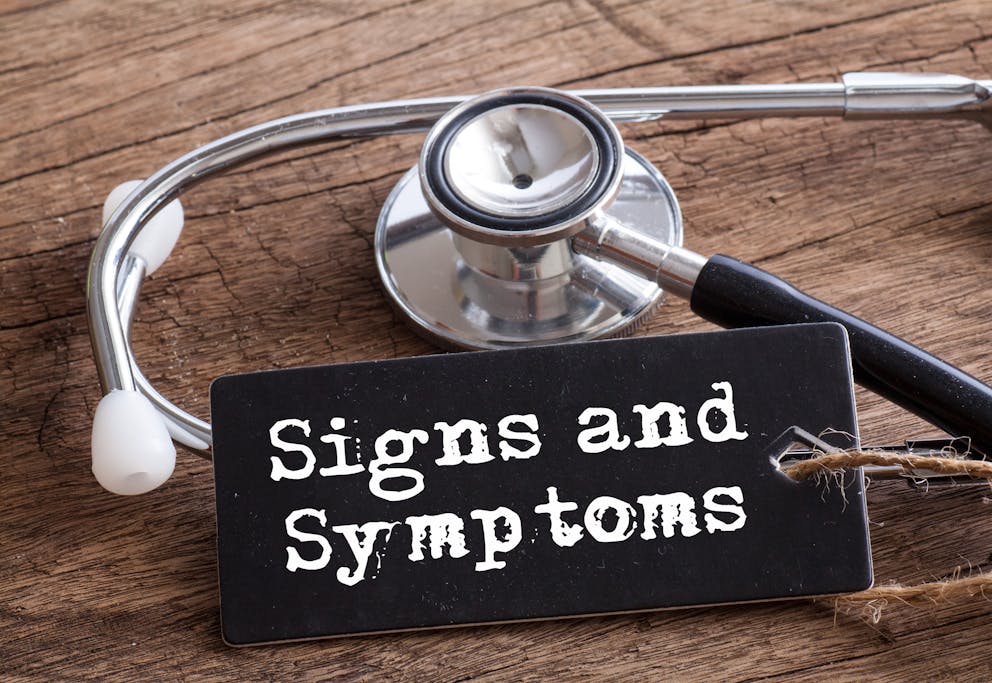What Is Parkinsons Disease

Healthy Keto Acceptable Foods List
Explore a comprehensive list of foods and beverages that align with Healthy Keto®
Identify which foods support fat-burning and metabolic health
Discover nutritious options for fats, proteins, and vegetables to support your health goals
Learn about common foods that aren’t Healthy Keto-approved

Healthy Keto Acceptable Foods List
Explore a comprehensive list of foods and beverages that align with Healthy Keto®
Identify which foods support fat-burning and metabolic health
Discover nutritious options for fats, proteins, and vegetables to support your health goals
Learn about common foods that aren’t Healthy Keto-approved

Healthy Keto Acceptable Foods List
Explore a comprehensive list of foods and beverages that align with Healthy Keto®
Identify which foods support fat-burning and metabolic health
Discover nutritious options for fats, proteins, and vegetables to support your health goals
Learn about common foods that aren’t Healthy Keto-approved

Healthy Keto Acceptable Foods List
Explore a comprehensive list of foods and beverages that align with Healthy Keto®
Identify which foods support fat-burning and metabolic health
Discover nutritious options for fats, proteins, and vegetables to support your health goals
Learn about common foods that aren’t Healthy Keto-approved

Healthy Keto Acceptable Foods List
Explore a comprehensive list of foods and beverages that align with Healthy Keto®
Identify which foods support fat-burning and metabolic health
Discover nutritious options for fats, proteins, and vegetables to support your health goals
Learn about common foods that aren’t Healthy Keto-approved

Healthy Keto Acceptable Foods List
Explore a comprehensive list of foods and beverages that align with Healthy Keto®
Identify which foods support fat-burning and metabolic health
Discover nutritious options for fats, proteins, and vegetables to support your health goals
Learn about common foods that aren’t Healthy Keto-approved

Healthy Keto Acceptable Foods List
Explore a comprehensive list of foods and beverages that align with Healthy Keto®
Identify which foods support fat-burning and metabolic health
Discover nutritious options for fats, proteins, and vegetables to support your health goals
Learn about common foods that aren’t Healthy Keto-approved

Healthy Keto Acceptable Foods List
Explore a comprehensive list of foods and beverages that align with Healthy Keto®
Identify which foods support fat-burning and metabolic health
Discover nutritious options for fats, proteins, and vegetables to support your health goals
Learn about common foods that aren’t Healthy Keto-approved

Healthy Keto Acceptable Foods List
Explore a comprehensive list of foods and beverages that align with Healthy Keto®
Identify which foods support fat-burning and metabolic health
Discover nutritious options for fats, proteins, and vegetables to support your health goals
Learn about common foods that aren’t Healthy Keto-approved

How to Read Your Body
Learn to recognize common symptoms and uncover their underlying health issues
Understand the signs of nutrient deficiencies to manage your health
Explore the four metabolic body types and the core factors that influence them
Interpret your body's signals from head to toe to identify potential health concerns

How to Read Your Body
Learn to recognize common symptoms and uncover their underlying health issues
Understand the signs of nutrient deficiencies to manage your health
Explore the four metabolic body types and the core factors that influence them
Interpret your body's signals from head to toe to identify potential health concerns

How to Read Your Body
Learn to recognize common symptoms and uncover their underlying health issues
Understand the signs of nutrient deficiencies to manage your health
Explore the four metabolic body types and the core factors that influence them
Interpret your body's signals from head to toe to identify potential health concerns

How to Read Your Body
Learn to recognize common symptoms and uncover their underlying health issues
Understand the signs of nutrient deficiencies to manage your health
Explore the four metabolic body types and the core factors that influence them
Interpret your body's signals from head to toe to identify potential health concerns

How to Read Your Body
Learn to recognize common symptoms and uncover their underlying health issues
Understand the signs of nutrient deficiencies to manage your health
Explore the four metabolic body types and the core factors that influence them
Interpret your body's signals from head to toe to identify potential health concerns

How to Read Your Body
Learn to recognize common symptoms and uncover their underlying health issues
Understand the signs of nutrient deficiencies to manage your health
Explore the four metabolic body types and the core factors that influence them
Interpret your body's signals from head to toe to identify potential health concerns

How to Read Your Body
Learn to recognize common symptoms and uncover their underlying health issues
Understand the signs of nutrient deficiencies to manage your health
Explore the four metabolic body types and the core factors that influence them
Interpret your body's signals from head to toe to identify potential health concerns

How to Read Your Body
Learn to recognize common symptoms and uncover their underlying health issues
Understand the signs of nutrient deficiencies to manage your health
Explore the four metabolic body types and the core factors that influence them
Interpret your body's signals from head to toe to identify potential health concerns

How to Read Your Body
Learn to recognize common symptoms and uncover their underlying health issues
Understand the signs of nutrient deficiencies to manage your health
Explore the four metabolic body types and the core factors that influence them
Interpret your body's signals from head to toe to identify potential health concerns
Parkinson’s disease can feel like an uphill battle, but understanding the condition and available Parkinson’s disease treatment options can bring hope.
This disease affects the central nervous system, impacting movement and causing tremors or rigidity. While the exact cause is unknown, research links it to factors like genetics and environmental toxins.
Treatment often focuses on managing disease symptoms, but there are many different angles to explore.
Decoding Parkinson's Disease
Parkinson’s disease centers around the decline of dopamine, a neurotransmitter. Neurotransmitters carry signals throughout the brain and body. Dopamine plays a crucial role in movement control.
When you have Parkinson’s disease, the brain cells responsible for producing dopamine begin to die off.
This leads to a dopamine deficiency, disrupting communication needed for coordinating movement. As the disease progresses and dopamine levels drop, symptoms often become more pronounced.
Unmasking the Symptoms: What to Look For
Parkinson’s disease doesn't manifest overnight. It's a gradual process, with subtle signs that might be dismissed at first.
Parkinson’s is often characterized by motor symptoms, which primarily impact physical movement. However, nonmotor symptoms can also occur.
These involve changes in bodily functions, mood, and cognition. Early detection of these symptoms allows for quicker intervention and might help slow the disease's progression.
Motor Symptoms of Parkinson’s Disease
Parkinson's Disease often involves a combination of motor symptoms. Each symptom impacts movement and coordination differently.
Tremors are a hallmark sign, characterized by involuntary shaking. These tremors usually begin in the hands or fingers, particularly at rest.
Another symptom is bradykinesia, or slowness of movement. Simple tasks like buttoning a shirt, which were effortless before, become increasingly difficult.
Alongside this is rigidity, or muscle stiffness, which restricts the range of motion, leading to discomfort. This combination often affects posture and balance as well. This can lead individuals to develop a stooped posture, increasing their risk of falls.

Beyond Movement: Unveiling the Non-Motor Symptoms
Beyond these movement-related challenges, Parkinson's disease can manifest with less obvious but disruptive non-motor symptoms. These often impact a person's mood, sleep patterns, and other essential bodily functions.
Here are some non-motor symptoms:
Changes in sleep patterns, including insomnia or daytime sleepiness.
Mood swings and emotional changes, often with depression or anxiety.
Loss of smell, a condition called anosmia.
Cognitive decline and memory problems.
Fatigue that's relentless.
These non-motor symptoms underscore that Parkinson's disease affects more than just movement; it's a complex condition.
Parkinson's Disease Treatment: An In-depth Look
There’s currently no way to reverse Parkinson’s disease. With the right approach to Parkinson’s disease treatment, we can often manage the symptoms and slow disease progression.
These treatments can range from medication and lifestyle adjustments to therapies. Let's explore some potential strategies for tackling these issues.
Medications for Parkinson's Disease: Easing Symptoms
Medications often play a critical role in managing Parkinson’s symptoms. One primary aim is to boost dwindling dopamine levels in the brain. That’s where drugs like Levodopa therapy come in. Levodopa helps increase dopamine production.
There are other classes of drugs doctors often prescribe in addition to or alongside levodopa:
Dopamine agonists: Mimic the effects of dopamine in the brain.
MAO-B inhibitors: This class of medications helps preserve existing dopamine.
COMT inhibitors: Work by extending the effect of levodopa.
Anticholinergics: Can help to control tremors and rigidity, two key symptoms of the condition.
Working closely with a medical professional to tailor a medication regimen that effectively addresses your symptoms is key.
They can help navigate potential side effects and determine optimal dosages, so don't hesitate to have open conversations.
Understanding the pros and cons of different medication classes and their suitability for individual needs is crucial. This personalized approach to medication is crucial in managing Parkinson's disease.
The Potential of Serrapeptase for Parkinson's Disease: Exploring Enzyme Therapy
Serrapeptase, a potent enzyme, is often hailed for its anti-inflammatory properties. It may offer promise in Parkinson's disease treatment, although research is ongoing.
Larger, more comprehensive studies are needed to definitively confirm these potential benefits.
However, emerging evidence suggests serrapeptase might address symptoms and potentially influence disease progression in several key ways:
Reducing Inflammation: Its robust anti-inflammatory effects could potentially protect brain cells against damage.
Breaking Down Abnormal Proteins: Serrapeptase is thought to possess the ability to clear away harmful protein buildup associated with Parkinson's. This aspect makes it particularly exciting as it might offer a unique mechanism for influencing the course of the disease.
If you're interested in exploring this avenue for Parkinson's disease treatment, consulting with a health care team about serrapeptase is important.

Dietary Changes for Parkinson's: Embracing a Ketogenic Approach
Your dietary choices play a crucial role in your overall health. For those seeking ways to manage Parkinson's disease, a ketogenic diet has gained considerable attention.
The ketogenic diet is renowned for its high-fat, moderate-protein, and low-carbohydrate makeup. This diet shifts the body's metabolism from relying on glucose to utilizing ketones.
Ketones become the primary fuel source.
This potentially offers neuroprotective effects that may benefit those living with Parkinson's.
Beyond Diet: Lifestyle Strategies for Parkinson's Management
Managing Parkinson’s disease goes beyond just pills and procedures. Lifestyle modifications can significantly enhance quality of life and slow progression.
Integrating a regular exercise regimen is important. This regimen should include a mix of aerobic activity, strength training, and balance exercises. These exercises can improve muscle strength, flexibility, and coordination.
Prioritizing sleep is equally vital, especially for managing Parkinson's disease. Creating a conducive sleep environment and practicing good sleep hygiene habits can improve sleep quality and mitigate fatigue.
Support groups can also provide emotional support and coping strategies for those with the disease and their loved ones.
Navigating the Journey: Seeking Specialized Care
Whether you're at the beginning stages of navigating a diagnosis or looking for more effective management strategies for your symptoms, seeking guidance from experienced healthcare providers is key.
It's important to work with providers specializing in neurological disorders to get appropriate treatment. It's crucial to have support and expertise to guide you.
Exploring Dietary Interventions for Better Symptom Management
For those managing Parkinson’s disease, dietary interventions can play a significant role in alleviating symptoms and improving quality of life.
Research suggests that a classic ketogenic diet—high in fats and low in carbohydrates—may offer neuroprotective benefits by providing an alternative energy source to the brain and reducing oxidative stress.
By promoting the production of ketones, this diet can potentially help manage some neurological symptoms associated with Parkinson’s disease.
However, it’s important to integrate a variety of keto-approved foods that are rich in healthy fats, moderate in protein, and low in carbs, to ensure nutritional balance.
A well-planned diet, combined with other holistic approaches such as physical therapy, medication, and lifestyle modifications, can offer a comprehensive strategy to support those living with Parkinson’s disease in managing their symptoms more effectively.
Conclusion
Even though a diagnosis of Parkinson’s disease can be challenging, combining medication, diet, and lifestyle changes can make a positive difference.
Supplements like serrapeptase, with guidance from a medical expert, can also be beneficial. Knowledge, informed decisions, and support form the pillars of navigating the landscape of Parkinson's disease treatment.
Previous blog
What is the GallbladderNext blog
The 7 Benefits of the Ketogenic DietTags

Popular
08/21/2024
35.3K views
05/22/2024
33.7K views
08/19/2024
197.2K views
03/18/2024
11/21/2022




